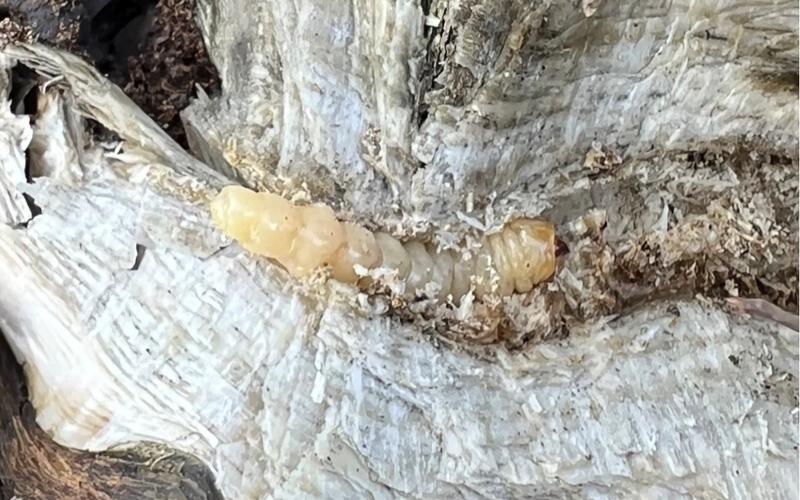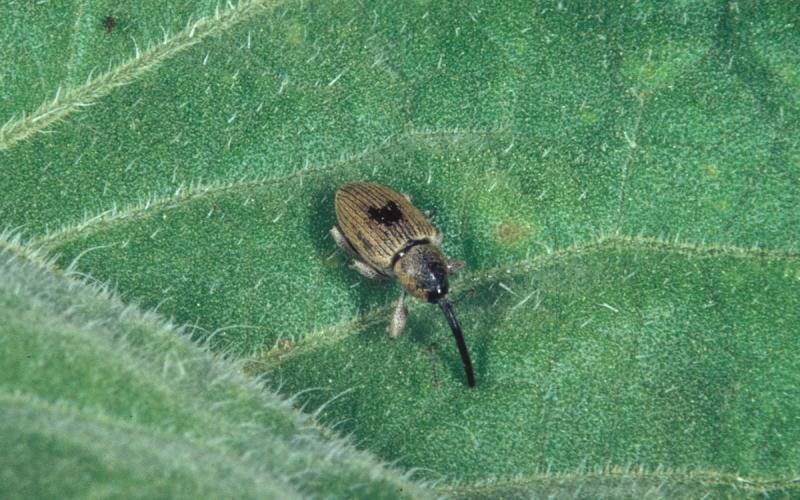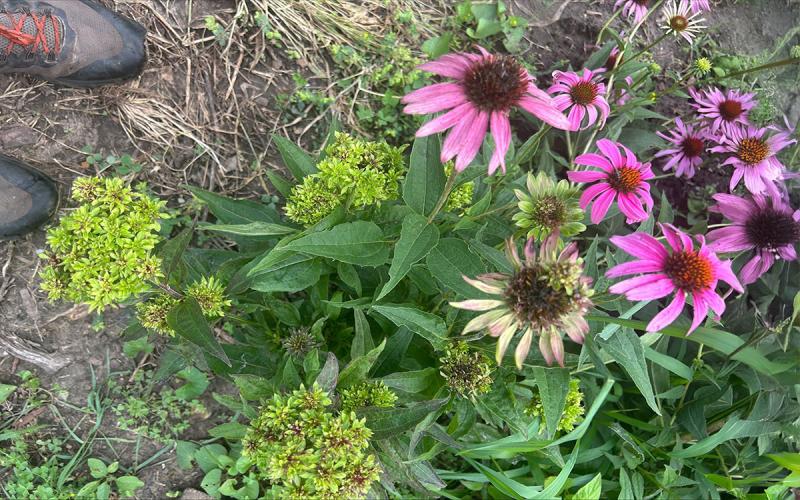Written collaboratively by Adam Varenhorst, Amanda Bachmann, Philip Rozeboom, Patrick Wagner, and Brad McManus.
Red sunflower seed weevil adult activity is well underway on sunflowers in South Dakota. Compared to previous years, the red sunflower seed weevil populations are much lower during 2025. This is likely due to the general lack of snow cover that was present during our coldest weeks during the 2024-2025 winter. Even though the red sunflower seed weevil numbers are down, we are still observing populations in South Dakota that are above threshold (5-50 weevils per head versus the 1,000’s observed during the previous years).
As a reminder, current recommendations for management in both confection and oilseed sunflower is to begin treatment when the majority of the field has reached the R5.4 growth stage but applications done between R5.1 and R5.4 can still provide yield protection. The bigger issue is applying insecticides too early, as this leads to re-infestation and the need to reapply insecticides. Given the state of pyrethroid insecticide resistance in South Dakota, the timing of insecticide applications is critical to ensure additional selection pressure is not placed on other insecticides (i.e., malathion). Scouting and management for red sunflower seed weevil stops once most of the field has surpassed 70% pollination (R5.7). At this time, we do not recommend using lambda-cyhalothrin, esfenvalerate, zeta-cypermethrin, or deltamethrin active ingredients in South Dakota as past research as shown these products provide minimal reductions in red sunflower seed weevil populations. In addition, full labeled rates of insecticides should be applied. Beta-cyfluthrin has had variable management success in the past. A piperonyl butoxide synergist (PBO) may also be added to any of the insecticide active ingredients that are listed on the label of the PBO’s. In a laboratory setting, we observed some increases in mortality with the inclusion of a PBO. We also suggest considering adding crop oil to insecticide products that do not prohibit its inclusion on their label.
If you believe you have resistance to malathion during 2025, please reach out to Dr. Adam Varenhorst.
Identification
Adults
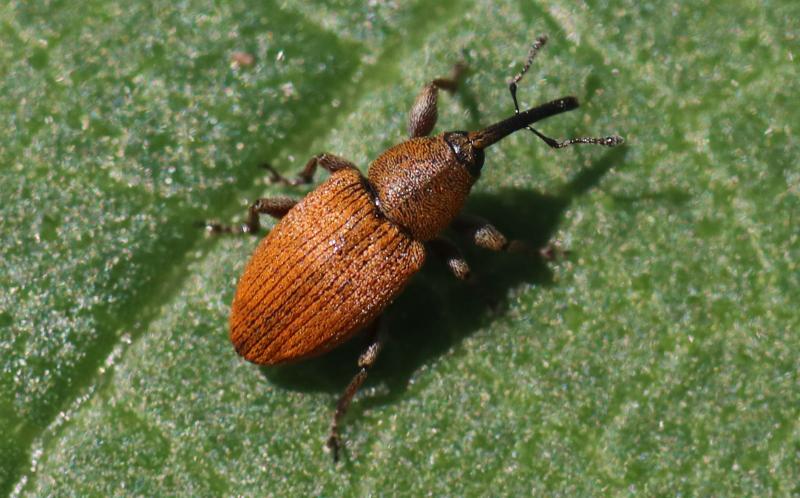
Red sunflower seed weevil adults are relatively small beetles (one-tenth to one-eighth of an inch long) that are a reddish-brown color. Like other weevils, they have mouthparts that extend forward beyond the head and form a snout (Figure 1). The antennae originate on this snout.
Red sunflower seed weevil adults are often present in fields prior to flowering and may be observed in the developing bud. Once flowering begins, they will move to the heads and often will crawl between the florets (Figure 2).
Larvae of the red sunflower seed weevil are cream-colored and relatively small. However, the larvae are not typically observed, as they feed directly on the developing seed (Figure 3).
In Sunflower Florets
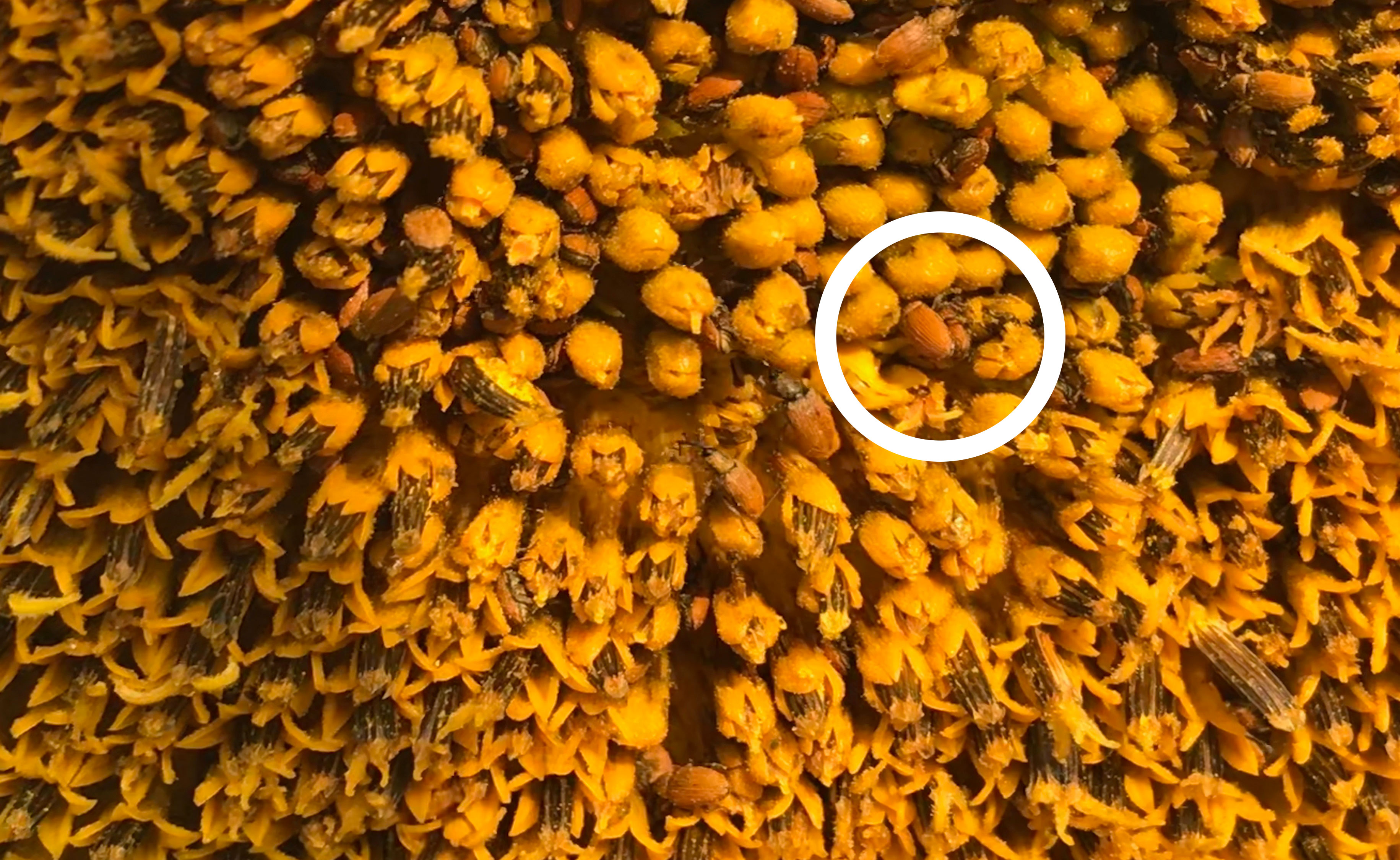
Larva
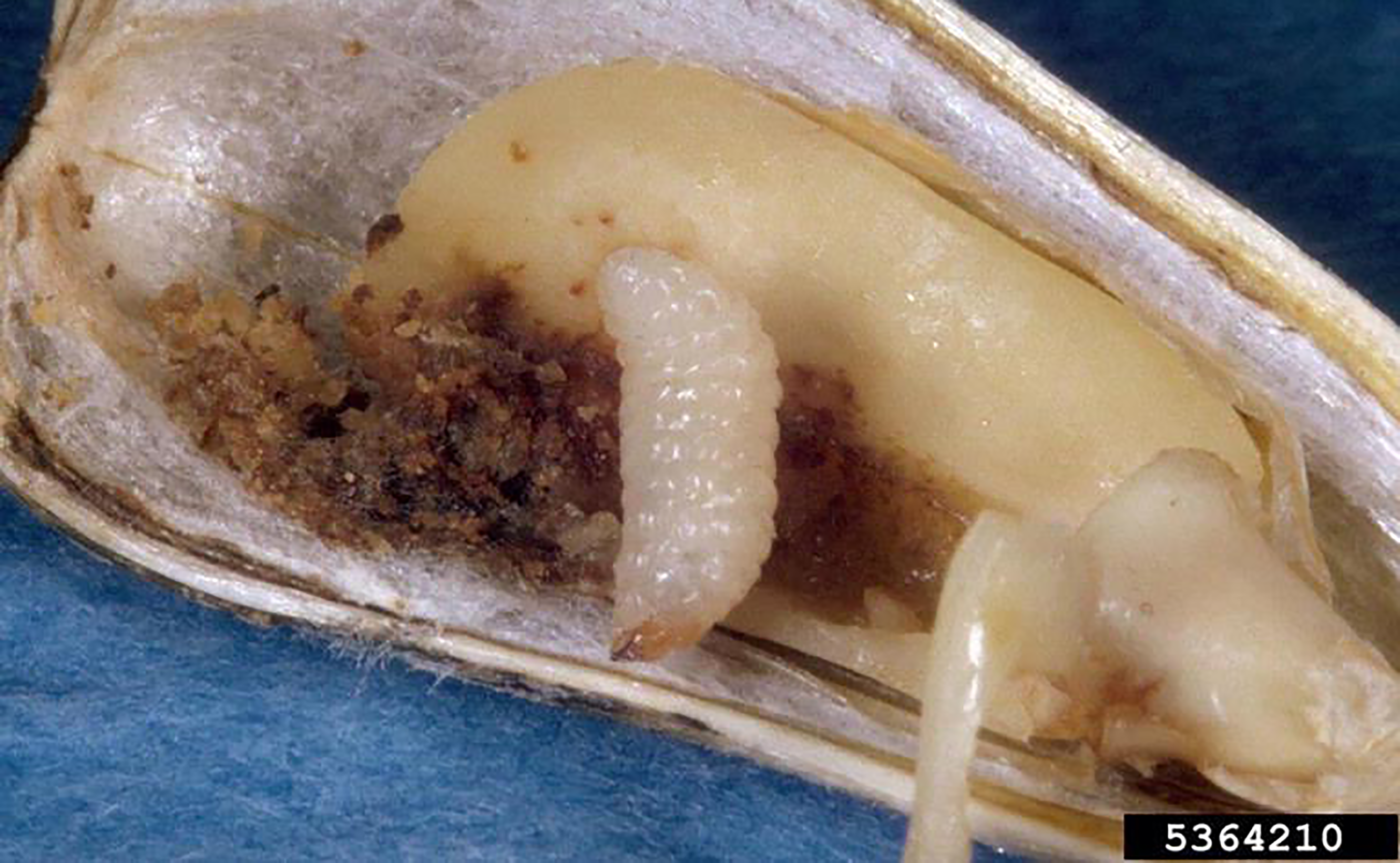
Scouting
Scouting for red sunflower seed weevils should begin when the yellow ray petals are visible on the face of the developing bud (R4 growth stage) and continue until 70% of pollen shed has occurred (R5.7 growth stage). Once most of the sunflowers in the field have reached R5.7, most egg-laying has finished, and the seeds are too mature to be suitable for further red sunflower seed weevil oviposition.
To scout for red sunflower seed weevils, walk approximately 75 feet into the field and examine five random plants. Next, walk to another location approximately 75 feet from the first and scout an additional five plants. Repeat this process until a total of 25 sunflower plants have been examined in the field. Developing heads can be examined by simply rubbing the face of the head to disturb the weevils and make them easier to count. If this method doesn’t work, they can also be scouted for by using an aerosol insect repellant, which is sprayed across the head. After spraying, simply wait for the beetles to begin to emerge and count them. Once the plants have been examined, calculate the average number of red sunflower seed weevil adults per plant.
Economic Threshold and Management
For red sunflower seed weevils, the economic threshold is dependent on the value of the crop, cost of insecticide management, and the planting population of the sunflower. For oilseed sunflower varieties, the economic threshold for red sunflower seed weevils is four to six adults per sunflower head. For confection sunflowers, the economic threshold is one red sunflower seed weevil per head. Ideally, management of the red sunflower seed weevil populations should also reduce other pests, including the banded sunflower moth, sunflower moth, and tarnished plant bug.
For a list of insecticides currently labeled for red sunflower seed weevil management, please refer to the latest South Dakota Pest Management Guide: Alfalfa and Oilseeds.
Since management of the red sunflower seed weevil occurs during flowering, considerations should be made to reduce the potential impact of the spray on pollinators. It is best to treat in the morning or evening, when pollinators are least active. To determine if hives are nearby, please refer to the Field Watch website and register as an applicator.
